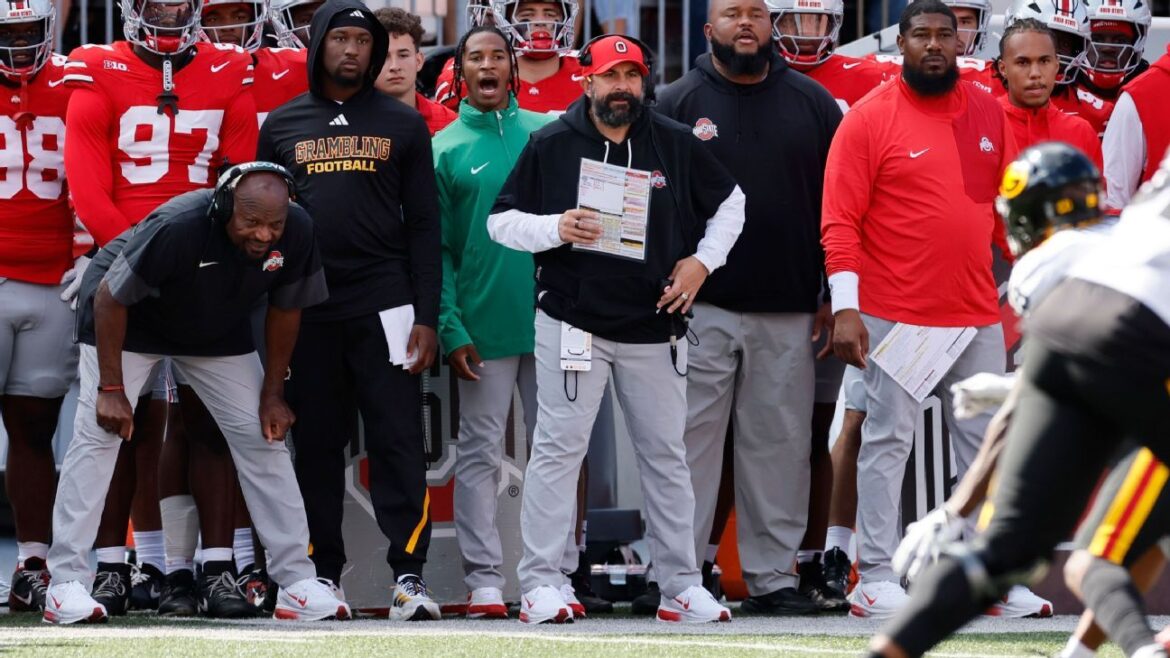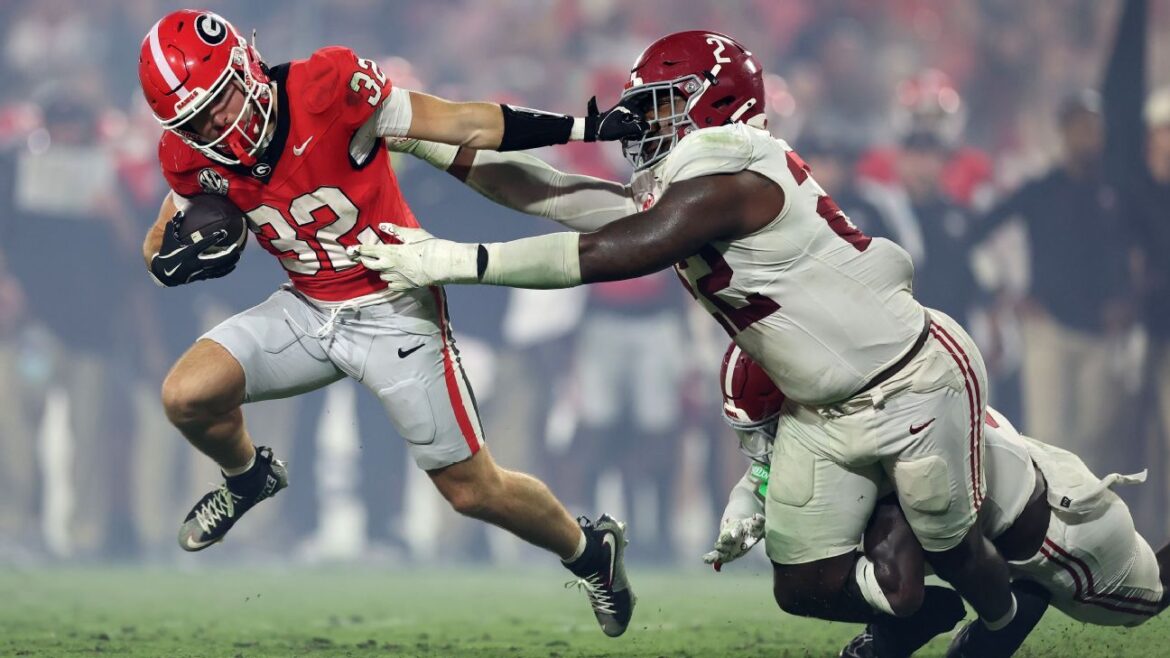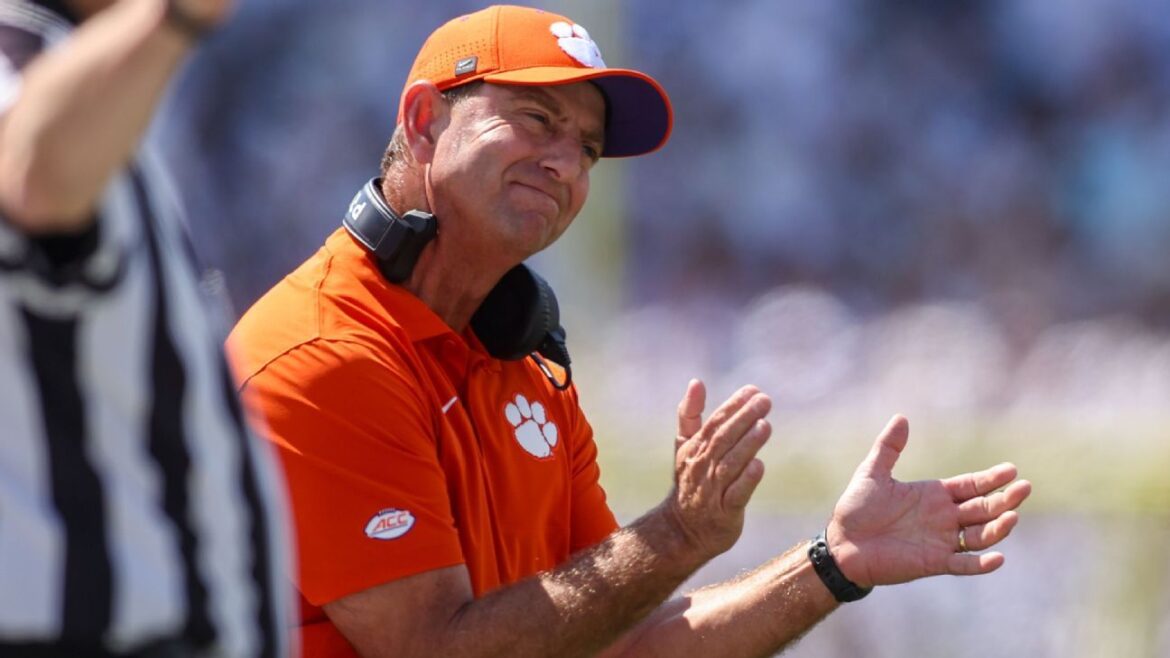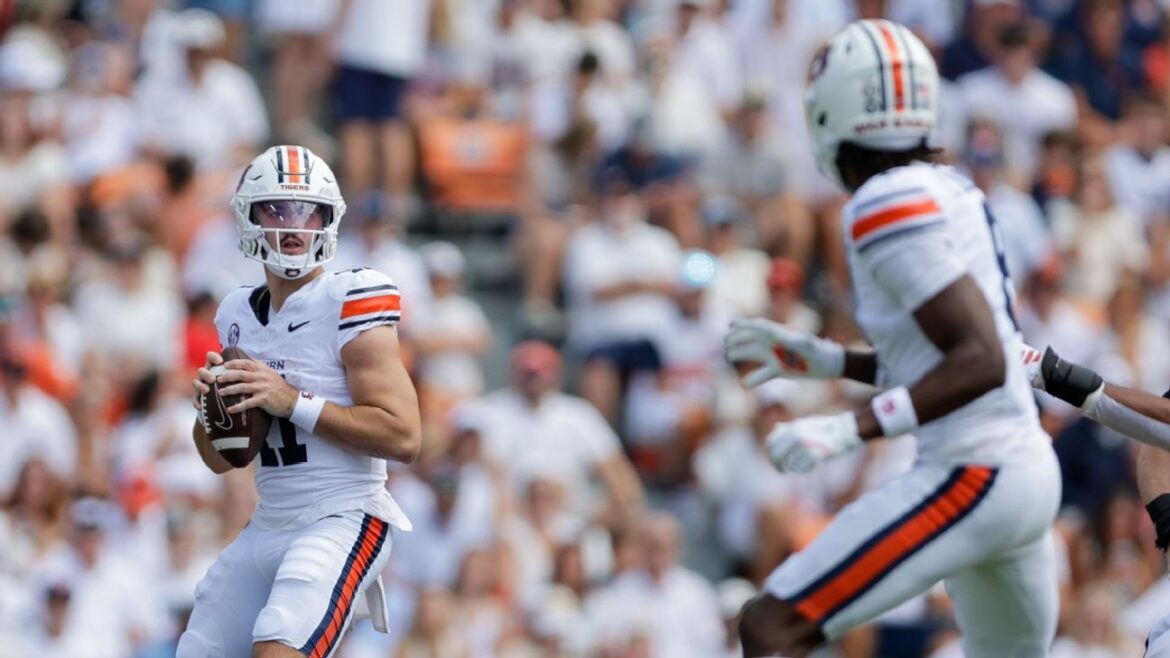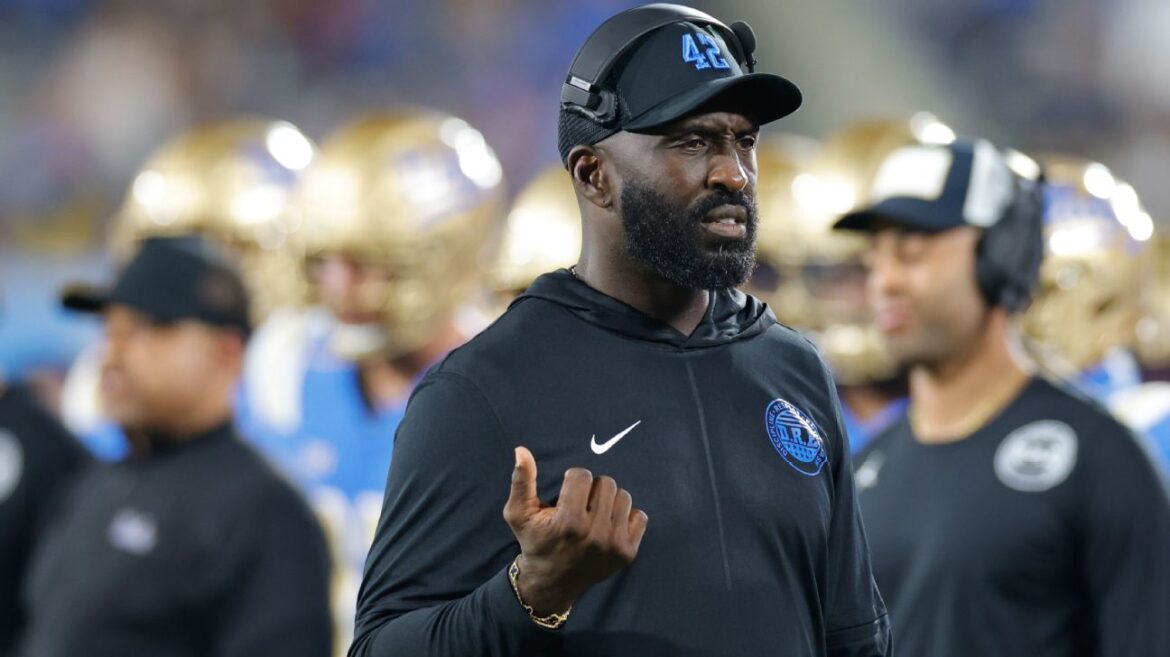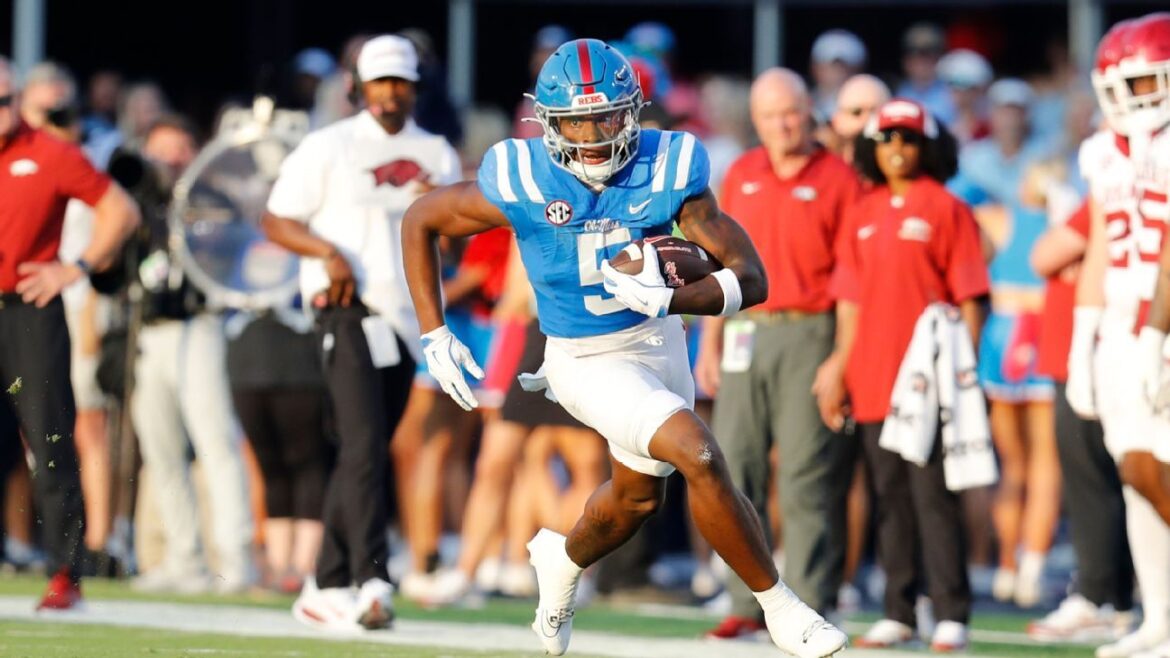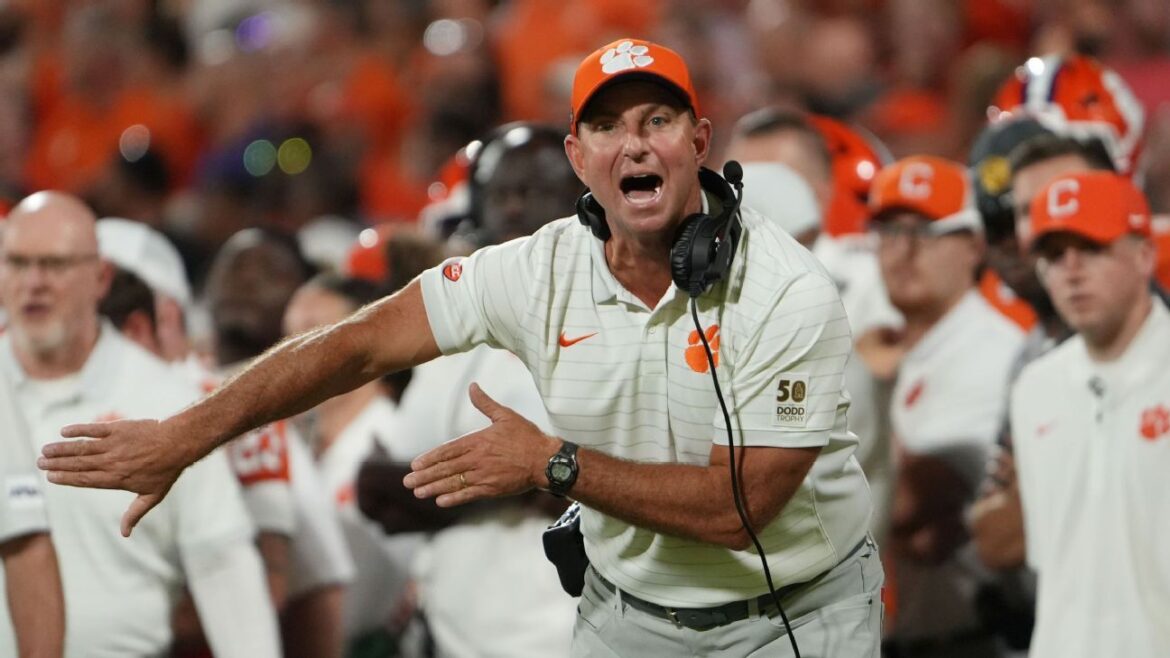When Miami fell short of the College Football Playoff despite having the nation’s top quarterback and offense in 2024, coach Mario Cristobal needed a new voice for the defense and found one in Corey Hetherman, a respected coordinator from Minnesota whose strong work had gone mostly under the radar.
When Florida State crashed out to a 2-10 finish in 2024, coach Mike Norvell’s full sweep of the program included two attention-grabbing coordinator hires in Gus Malzahn (offense) and Tony White (defense).
Hetherman, Malzahn and White aren’t the only reasons this week’s Miami-Florida State game has regained some juice, but their impact has been noticeable. Miami ranks ninth nationally in points allowed (11.5 PPG) and tied for eighth against the run (76.3 YPG). Florida State leads the nation in both scoring (53 PPG) and total offense (600 YPG), and its defense entered Friday’s game at Virginia ranked in the top 25 in several major categories.
Other teams also are witnessing the impact of first-year coordinators, from positive to concerning to somewhere in between. Oklahoma’s offseason makeover on offense included adding not only quarterback John Mateer from Washington State, but also his playcaller there in Ben Arbuckle. Joey McGuire brought in playcallers Shiel Wood (defense) and Mack Leftwich (offense) to Texas Tech to accelerate the ascent of an improved roster with championship aspirations.
“You’re like, ‘Hey, we’re not rebuilding. You’re coming in and we’ve been in a bowl game the last three years, won two of the three,'” McGuire told ESPN. “‘You need to understand we’re putting all this money in. You’ve got to be ready to go.'”
Meanwhile, Notre Dame is still trying to reach its defensive standard under first-year coordinator Chris Ash.
Five full weeks of the 2025 season have provided enough evidence to evaluate how the first-year coordinators are performing. Here are my nearly midterm grades for coordinators who are shining, struggling or somewhere in between. (Note: I evaluated only coordinators joining returning head coaches, as opposed to those on entirely new staffs.)
Miami defensive coordinator Corey Hetherman
After Miami blew leads and allowed a total of 83 points in losses to Syracuse and Iowa State to close the 2024 season, Cristobal made a necessary coordinator change and hired Hetherman, who at Minnesota had overseen the No. 5 total defense and No. 9 scoring defense in the FBS.
Hetherman inherited an undeniably talented group but had to maximize its ability. Established stars such as Rueben Bain Jr. are thriving — 2 sacks, 3.5 tackles for loss, 1 interception, 1 forced fumble — and transfers Mohamed Toure (Rutgers) and Jakobe Thomas (Tennessee) have helped right away.
Miami is bottling up the run, allowing just 2.6 yards per rush with a long of 30 yards. Take away Notre Dame’s 17-point fourth quarter in the opener, and Miami has allowed 29 points in the other 15 quarters it has played.
“He’s an elite teacher, and his care factor, it just screams out of him,” Cristobal told ESPN of Hetherman. “Our guys have learned a lot of football. They’re playing with physicality and playing fast, and communicating at a much higher level. We’re just consistently getting better on that side of the ball.”
Grade: A
Ohio State defensive coordinator Matt Patricia
Jim Knowles’ departure from the national champion Buckeyes to Big Ten rival Penn State seemed like a real blow, and Ohio State hiring Patricia as his replacement seemed like a head-scratcher. Patricia had not worked in college football since 2003 and last served as a defensive coordinator for the New England Patriots in 2017. Despite winning three Super Bowls with the Patriots, Patricia arrived in Columbus with some question marks.
The play of the Ohio State defense has answered any questions about the hiring of Matt Patricia. Jay LaPrete/AP
He made an excellent first impression by guiding the Buckeyes’ defense to a near shutout of Texas and quarterback Arch Manning in the season opener. Texas didn’t score until 3:28 remained, and Manning struggled against Patricia’s scheme. Ohio State’s defense delivered an arguably more impressive performance Saturday at Washington, keeping the Huskies out of the end zone and holding them to 15 first downs and 234 total yards.
Despite inheriting a unit with mostly new starters in the front seven, Patricia has watched Caden Curry, Arvell Reese, Kayden McDonald and others get off to fast starts. The Buckeyes lead the FBS in fewest points allowed (5.5 PPG) and rank eighth in allowing 3.99 yards per play.
“The guys just love Matt,” Ohio State coach Ryan Day told ESPN this spring. “He’s been a defensive coordinator for Super Bowl teams. He’s been an offensive [assistant]. He’s been very much involved, like a GM. One of the reasons why we brought him in was because of his background of doing multiple things on defense that fit the skill set of the guys that we have.”
Linebacker Sonny Styles echoed Day, saying of Patricia, “He’s able to adapt to whatever personnel he has. You get to experience a lot of different things, and you get to display a multiplicity of abilities.”
Grade: A
Texas Tech defensive coordinator Shiel Wood and offensive coordinator Mack Leftwich
The offseason buzz at Texas Tech revolved around its portal additions and the cost to bring them in, but the new playcallers McGuire would hire also impacted an all-in season for the Red Raiders. He had to replace offensive coordinator Zach Kittley, who became the youngest head coach (33) in the FBS when he left for Florida Atlantic. Texas Tech also needed a new coordinator for a defense that had slipped to 126th nationally in yards allowed and 121st in points allowed.
McGuire looked within the league for Wood, who was at Houston and had previous coordinator experience at Tulane, Troy and Army. Wood inherited a unit returning standouts such as Jacob Rodriguez but also featuring an influx of high-priced transfers, especially in the front seven, including Romello Height (Georgia Tech), David Bailey (Stanford) and Lee Hunter (UCF). So far, Wood is pulling all of the right strings, as Texas Tech is allowing 11.3 points per game and just 3.7 yards per play, both ranking in the top 10. Rodriguez has been all over the field, and Bailey and Height have combined for six sacks and 11 quarterback pressures.
“I wanted a guy that was a multiple, that wasn’t just a three-down guy, wasn’t just a four-down guy, who could fit our current players in and then the guys we were going to bring in,” McGuire said. “And I wanted somebody extremely detailed and organized. If anybody asks me what Shiel Wood is like, I’d say he’s extremely detailed and organized and then, boom, he’s got all kinds of juice for the players to rally around.”
Leftwich is a lifelong Texan who never worked at Texas Tech but had links to the school and the Mike Leach Air Raid legacy through Eric Morris, whom Leftwich worked under at Incarnate Word. Like Kittley, Leftwich is young (30) but accomplished and is working with a mix of returnees, including quarterback Behren Morton, and several notable offensive line transfers. Texas Tech is averaging 52 points per game and 7.8 yards per play.
“I wanted to still keep our Texas Tech identity whenever it comes to offense, but also, there’s so many little additions to what he does that makes it really tough to defend,” McGuire said. “One thing that makes Mack different, you’ve got some of the wide splits like Art [Briles] used to do at Baylor. You got some run-and-shoot and the stuff we do. Then, at the end of the day, his dad’s an offensive line coach, so he’ll tell you, we don’t run the football, he’s not welcome to Thanksgiving.”
Grade: A
Florida State offensive coordinator Gus Malzahn
Norvell wasn’t going to give up offensive playcalling to just anybody. Malzahn mentored Norvell early in his coaching career, and the chance to reunite at Florida State made sense for both.
“I feel like I got one of the best playcallers in the country,” Norvell told ESPN this summer.
Editor’s Picks
2 Related
The Malzahn move paid off right away as Florida State consistently stayed a step ahead of Alabama in a 31-17 upset to open the season. FSU averaged 6.1 yards per play and converted 5 of 12 third-down chances and both of its fourth-down opportunities, including a fourth-and-1 from the Seminoles’ 34-yard line with a 7-point lead in the fourth quarter.
Florida State is averaging 53 points per game and 8.2 yards per play under Malzahn, whose creativeness has repeatedly shown up. There were some missteps in Friday’s loss at Virginia, as Florida State committed three turnovers and couldn’t convert several opportunities in Cavaliers territory. But Malzahn’s usage of quarterback Tommy Castellanos, wide receiver Duce Robinson and others has been effective.
Grade: A-
Utah offensive coordinator Jason Beck
The Beck-Devon Dampier package deal from New Mexico didn’t generate as much national attention as the Arbuckle-Mateer pairing at Oklahoma, but it had the potential to be just as significant, given Utah’s offensive struggles the past two seasons. Under Beck, Dampier earned first-team All-Mountain West honors in 2024 and led the league in both total offense (3,934 yards) and yards per carry (7.52).
“Me and my defensive coordinator, Morgan Scalley, who’s the head coach-in-waiting, conducted a national search, and when all was said and done, we both were on the exact same page: This is the guy,” head coach Kyle Whittingham said of Beck this summer. “Then, when Devon expressed interest to transfer by going in the portal, we said, ‘It’s natural, it’s a natural fit. Two for one.'”
Utah’s offense started strong, averaging 45.7 points in the first three weeks. Dampier was an instant success, recording seven touchdown passes during the span and twice eclipsing 80 rushing yards. But the Utes struggled in their first major test against Texas Tech, as Dampier twice was intercepted and didn’t account for a touchdown. The Utes did not reach the end zone until 10:22 remained and were outgained 484-263 in a 34-10 home loss.
Dampier and the Utah offense bounced back nicely Saturday at West Virginia — 48 points, 532 yards, 33 first downs, career-high four passing touchdowns for Dampier — but the next two games against Arizona State (home) and BYU (road) will reveal a lot.
Grade: B+
Oklahoma offensive coordinator Ben Arbuckle
The Sooners looked to the Palouse and Washington State to fix their slumping offense, adding Arbuckle and quarterback Mateer in the top offseason package deal. Arbuckle was just 27 when he landed the OC job at WSU, becoming the youngest coordinator in the Power 5 at the time. He helped develop Cam Ward and Mateer, lightly recruited quarterbacks from his native state of Texas, into national stars.
Ben Arbuckle “brings out the best in our guys,” says Oklahoma head coach Brent Venables. Kevin Jairaj/Imagn Images
Arbuckle and Mateer, who is expected to miss about a month with a broken bone in his right hand, have helped the Sooners to a 4-0 start that includes notable home wins against Michigan and Auburn. Oklahoma isn’t an offensive juggernaut, ranking 59th nationally in scoring, but the Sooners are averaging 305 passing yards per game and have scored on all 17 of their trips to the red zone.
“He’s done a fantastic job from leadership, energy, developing an identity,” coach Brent Venables said of Arbuckle. “He’s a tough guy, demands great discipline and accountability, brings out the best in our guys, knows what he wants to do.”
Grade: B+
Florida State defensive coordinator Tony White
The Malzahn move made waves throughout the sport because power-conference head coaches rarely leave for coordinator spots, but Florida State’s hiring of White also qualified as a significant coup. White had performed well at Nebraska, an ascending program, but left to try to revive an FSU team that had slipped to 87th nationally in points allowed.
Like Malzahn, White had an immediate effect. White comes from the Rocky Long coaching tree and employs a variation of Long’s 3-3-5 scheme. Florida State was the more physical defense in the opening win against Alabama, holding the Tide to 87 rushing yards while allowing just 6 of 17 third-down conversions and 2 of 5 fourth-down conversions.
Players such as safeties Earl Little Jr. and Ashlynd Barker have shined under White.
“One of the things that’s most attractive for me bringing him here, is that you’ve seen so many different variations, the philosophy, the mindset, really it’s the style of play that I love more than anything else,” Norvell told ESPN. “He does a great job utilizing personnel and showcasing his playmakers, but the style of play is something that definitely holds true.”
White’s grade certainly was higher before Friday’s loss at Virginia, which often bullied Florida State’s defensive front despite being down several offensive linemen. Virginia converted 7 of 13 third-down chances and both of its fourth-down opportunities and scored 16 more points (46) than FSU had allowed in its first three games combined.
Grade: B+
Arizona defensive coordinator Danny Gonzales
When coach Brent Brennan’s much-anticipated first season at Arizona flopped, he replaced both primary coordinators and promoted Gonzales, the team’s linebackers coach and special teams coordinator, to oversee the defense. Gonzales had defensive coordinator experience from San Diego State and Arizona State before becoming head coach at New Mexico.
Despite Saturday’s reality-check loss at Iowa State, Arizona has made some progress on both sides of the ball.
The Wildcats have gone from 108th in scoring defense in 2024 to 25th, and from 105th in total defense to 17th. Led by Genesis Smith, six players already have interceptions this season.
“I’ve had to coach against Danny Gonzalez defenses for lots of years, so there was zero hesitation about what I thought he was capable of doing,” Brennan told ESPN. “Everybody’s on the same page. The standard is extremely high for how hard we play and how people execute.”
Grade: B+
Georgia Tech defensive coordinator Blake Gideon
Brent Key made a defensive coordinator change midway through his first year, then lost Tyler Santucci to the NFL after 2024, so he had an important choice to make ahead of a big 2025 season. Gideon had impressive credentials as a former Texas player and assistant, but his only coordinator experience came on special teams with Houston and Ole Miss.
So far, Gideon looks like a strong choice. Georgia Tech is allowing 190.4 pass yards per game and has nine defenders with multiple tackles for loss, led by senior defensive tackle Jordan van den Berg. The team is trying to become the first Georgia Tech defense since 2006 to allow fewer than 20 points per game.
Although the defense had a shaky start Saturday against Wake Forest, it allowed only six second-half points and secured the game-clinching interception on a 2-point try in overtime.
“They’ve taken on Blake’s personality,” Key told ESPN this spring. “He’s a fiery, roughneck guy. The first time I talked to him, we talked for an hour and 30, hour and 45 minutes, and just kind of hit it off. Then when he came and presented, it was very uncut, raw, just, ‘This is who I am. This is what I do, just how we’re going to do it.’ He’s been a really good addition.”
Grade: B
Penn State defensive coordinator Jim Knowles
Knowles is a difficult eval at this point. Penn State has faced only one significant — or even moderate — test and came up short Saturday against Oregon. The Nittany Lions allowed a total of 17 points in their first three games but faced the No. 90 and No. 130 offenses in the FBS in Florida International and Nevada, as well as FCS Villanova. Given the personnel Penn State brought back on defense, anything less than domination at home would sound the alarms.
All of ESPN. All in one place.
Watch your favorite events in the newly enhanced ESPN App. Learn more about what plan is right for you. Sign Up Now
Penn State made the biggest splash in the coordinator market — bringing Knowles to his home state from a national championship team within the Big Ten — specifically for games like Saturday night’s. Knowles’ defense started very strong, holding Oregon to three points in the first 42 minutes. But then the Ducks mounted consecutive touchdown drives of 80 and 75 yards.
The Nittany Lions had a chance to win in the first overtime after striking first, but they couldn’t stop Dante Moore, who then fired the game-winning touchdown pass in the second extra session. Penn State never sacked Moore or forced a turnover and finished with just one tackle for loss.
Knowles is arguably the nation’s best defensive architect, and Penn State should be fine on that side of the ball. But the grade is weighted down by the loss to Oregon.
Grade: B-
Arizona offensive coordinator Seth Doege
The Wildcats finished 114th nationally in scoring last season despite having a top-10 NFL draft pick in wide receiver Tetairoa McMillan, quarterback Noah Fifita and others. Brennan brought in Doege, a former Texas Tech quarterback under Mike Leach who helped Marshall to a Sun Belt championship in his only season as offensive coordinator. Fifita has been solid under Doege so far, averaging 241.3 passing yards per game with eight touchdowns and two interceptions.
Arizona’s run game has surged with Ismail Mahdi and Quincy Craig combining to average 7.3 yards per carry. The Iowa State loss certainly was a setback, as Fifita twice was picked off, but Arizona still had decent overall numbers (20 first downs, 360 total yards).
“When we went through the process of interviewing some people, Seth really stood out with his confidence, his command of what you know he wants to do schematically, and then his willingness to adapt and adjust according to the strengths of your personnel,” Brennan said. “He and Noah have built an incredible relationship. Coach Doege played the position, played it at a high level, and he himself had multiple coaches, so he’s able to kind of walk Noah through the process of all those things.”
Grade: B-
Michigan offensive coordinator Chip Lindsey
Although Lindsey had never coached in the North and lacked any connections to Sherrone Moore and the Michigan staff, his hiring still made some sense because of his track record with quarterbacks and the passing game. Michigan’s passing game finished 2024 ranked above only the service academies — Navy, Air Force and Army — and needed someone to revive the passing attack and mentor freshman quarterback Bryce Underwood, the nation’s No. 1 recruit.
Michigan has improved a bit and Underwood has flashed brilliance, but the freshman was a combined 21-of-46 for 247 passing yards in road games against Oklahoma (loss) and Nebraska (win). The Wolverines are running the ball very well with Justice Haynes and Jordan Marshall, but ultimately their success this season hinges on Underwood’s development and his ability to be a big factor against the tough opponents still upcoming, including USC, Washington, Michigan State and Ohio State.
Grade: B-
Clemson defensive coordinator Tom Allen
Despite winning another ACC title last season, Clemson’s defense had become ordinary, finishing 42nd nationally in points allowed and 85th against the run. A new voice was needed and Allen, who helped Penn State to the CFP semifinal in his only season as coordinator, made a lot of sense. Allen and coach Dabo Swinney connected very well, and Allen had spent some time in the region as a high school coach in Florida and later as South Florida’s defensive coordinator.
The defense certainly hasn’t been the biggest reason Clemson sits at 1-3, outside the CFP picture and most likely the ACC race. Allen’s group kept things close in an opening loss to LSU, allowing only three points in the first 26 minutes. Clemson struggled to stop Georgia Tech quarterback Haynes King in a Week 3 loss, but its overall defensive performance wasn’t bad. But the defense struggled from the start Sept. 20 against Syracuse, surrendering 24 first-half points and 433 yards.
Clemson’s bigger problems seem to be with quarterback Cade Klubnik and the offense, but a defense filled with future NFL players needs a breakthrough soon.
Grade: C-
Notre Dame defensive coordinator Chris Ash
Ash was a somewhat surprising choice to replace Al Golden, the 2024 Broyles Award winner (nation’s top assistant) who returned to the Cincinnati Bengals as defensive coordinator. Although Ash had notable credentials — former Rutgers head coach, former defensive coordinator at four Power 4 programs — he hadn’t overseen a college defense since Texas in 2020.
“[The 2024 season] is over, the group of players is not the same and to just say we’re going to be able to do the exact same thing, probably not the right approach,” Ash told ESPN this spring. “To say we’re going to completely change everything was not the right approach, either. Let’s continue to build on the things that have been done. Let’s blend it with some things that we might need to do to fit our personnel, and then we take off and go.”
Unfortunately for Ash and the Irish, the defense saw a regression through its first three games. Notre Dame surrendered 41 points, 488 yards and 21.2 yards per completion in a home loss to Texas A&M — and constantly had Aggies wide receivers running free — then allowed four scoring drives of 58 yards or longer against Purdue.
Head coach Marcus Freeman has continued to back Ash, saying he won’t strip away playcalling duties and that the staff collectively must figure out why the unit isn’t executing correctly. The defense responded nicely Saturday against Taylen Green and a potent Arkansas offense, which finished with just 13 points and 15 first downs while turning over the ball twice.
Grade: D+
UCLA offensive coordinator Tino Sunseri
Sunseri was the only on-field assistant from Indiana’s 2024 team to leave, but the move made sense, as he became the primary offensive coordinator for the first time in his coaching career. The 36-year-old from a notable coaching family landed with a UCLA program that made the biggest splash in the spring transfer portal, landing quarterback Nico Iamaleava from CFP participant Tennessee.
But the excitement around UCLA’s season quickly faded. The Bruins were held to 10 points in two of their first three games, lopsided losses to Utah and New Mexico. Iamaleava had three touchdowns and three interceptions in the span, and only one Bruins player had a reception of longer than 21 yards. UCLA’s woes in the run game preceded Sunseri, but the team is averaging only 124.3 yards per game on the ground (105th nationally) with Iamaleava as the only player with more than 200 rushing yards for the season.
The winless Bruins have reached 20 points just once in their first four games.
Grade: D-

